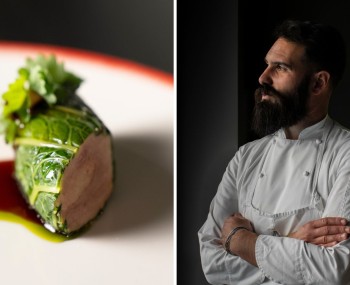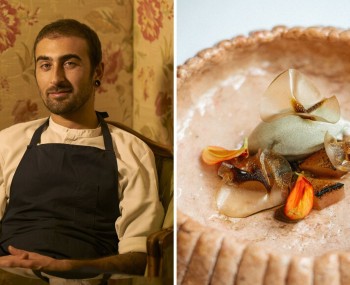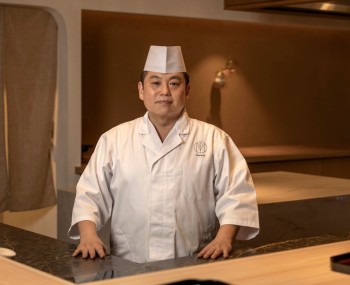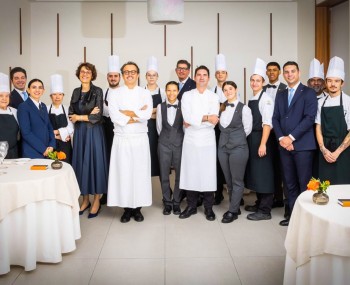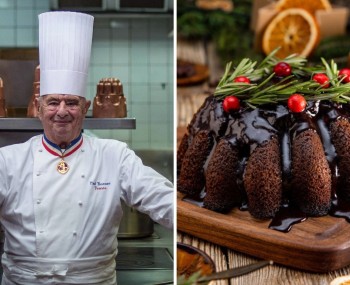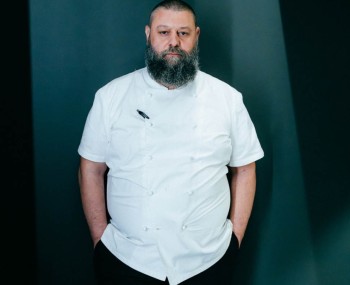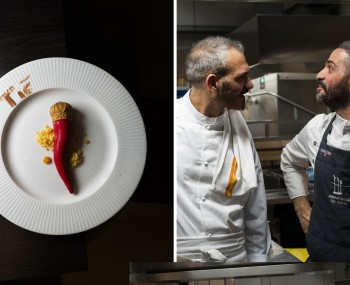Campania natives, French crossings and a present at Villa Zarri, in the province of Bologna, where he has created one of the area's best-loved gourmets: between two edges such as discipline and tradition, Agostino Iacobucci makes a cuisine capable of moving beyond technique.
The chef and the restaurant
Even if you have eaten a dozen dishes and chatted extensively with the chef, do not give in to the self-assumption that you have exhausted everything. Of being full of your opinions, and of what are nothing more than initial impressions. Agostino Iacobucci, after mispronouncing my last name, probably overwhelmed by a childhood memory, corrected himself and decided to call me Lupin.
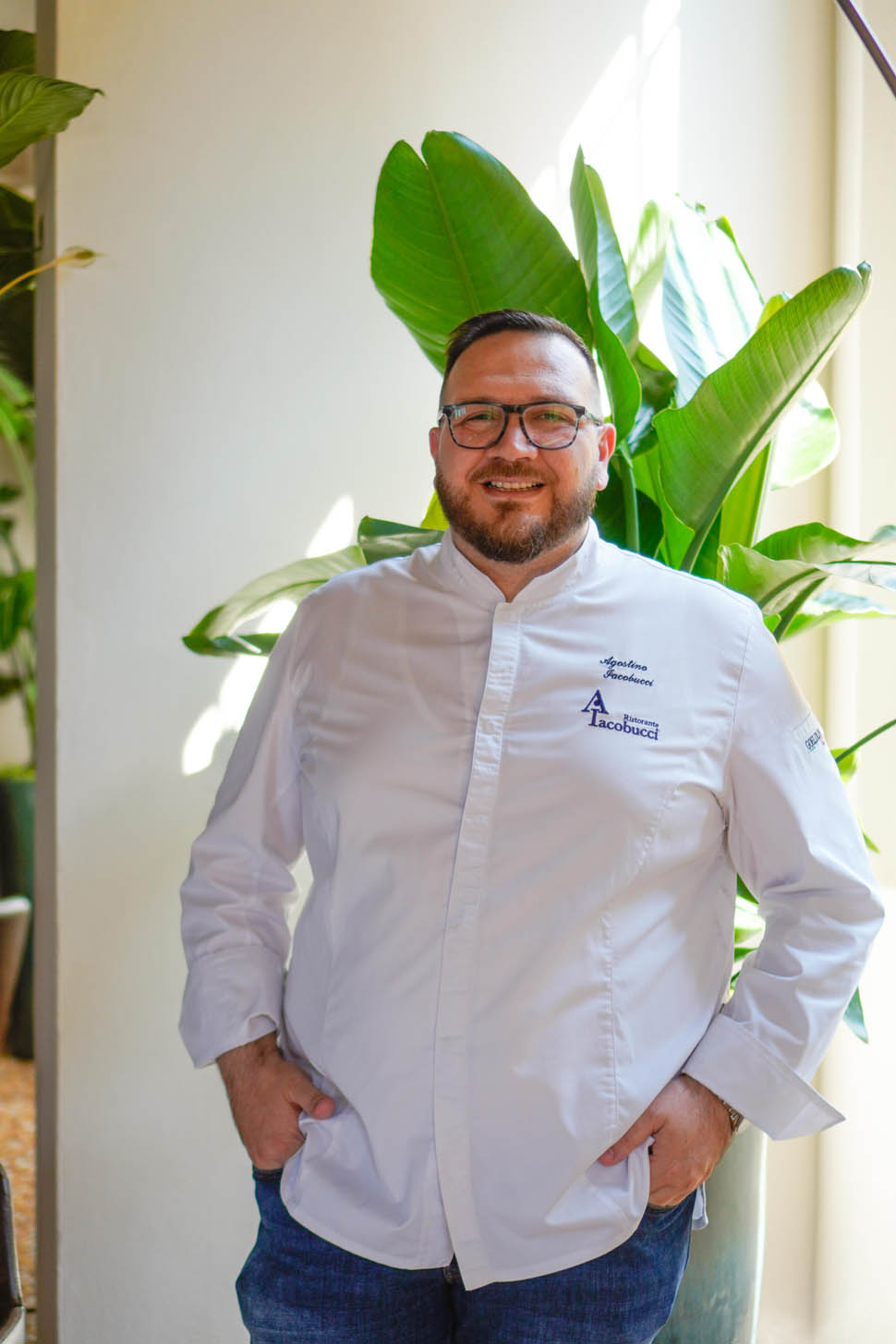
While it might have bothered me at first, letting a wall of discomfort or unnecessary verbal distrust prevail, I don't know how, either, perhaps hearing his voice so pleasantly Campanian, strangely high-pitched and childlike in timbre, it happened that the nickname stuck in my mind. Indeed, without taking it too seriously, I sewed it on myself and also on my pen. Like Lupin in fact, I believe that this tale is ultimately nothing more than a theft of his culinary art. I will write like a thief, and hopefully also a bit of a gentleman.
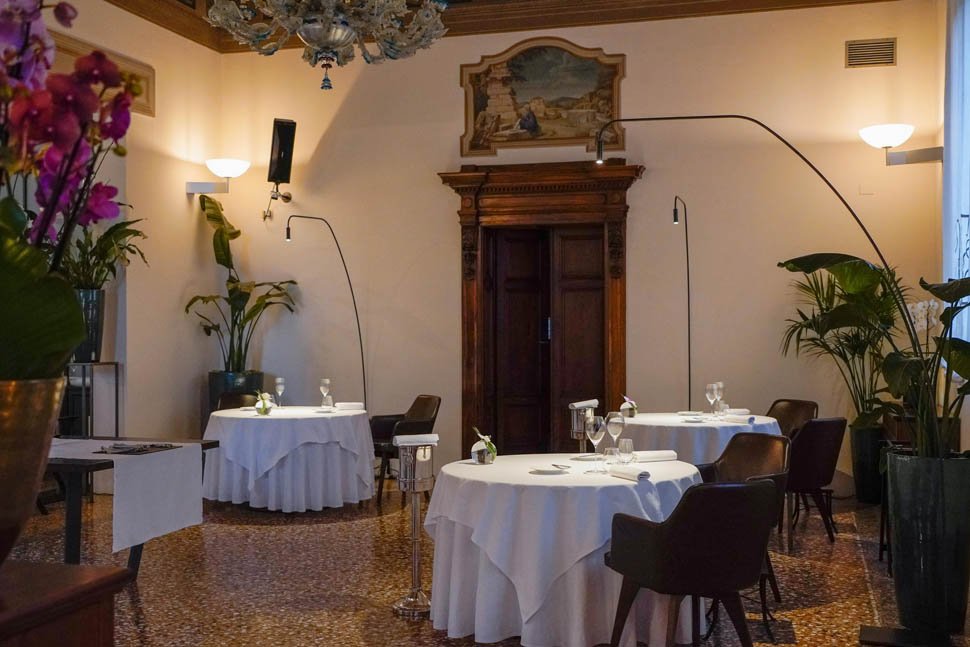
Villa Zarri is a limbo. You still feel the breath of Bologna on your shoulders and the countryside has not yet begun. The parking lot is wide. An opening in a hedge marks the passage into the other world. A centuries-old garden, a 16th-century villa. Rediscovering the classics is good. It makes you remember that if you are so smart, if you have arrived at a certain point, perhaps you owe it to the steps someone has taken before you. Iacobucci is a classic, at least for Bologna. At Portici he gave a signal, evidently not fully understood. Then he decided to pause himself. And those were not suspension dots, they were a retreat to be able to express himself better, to put some exclamation points.
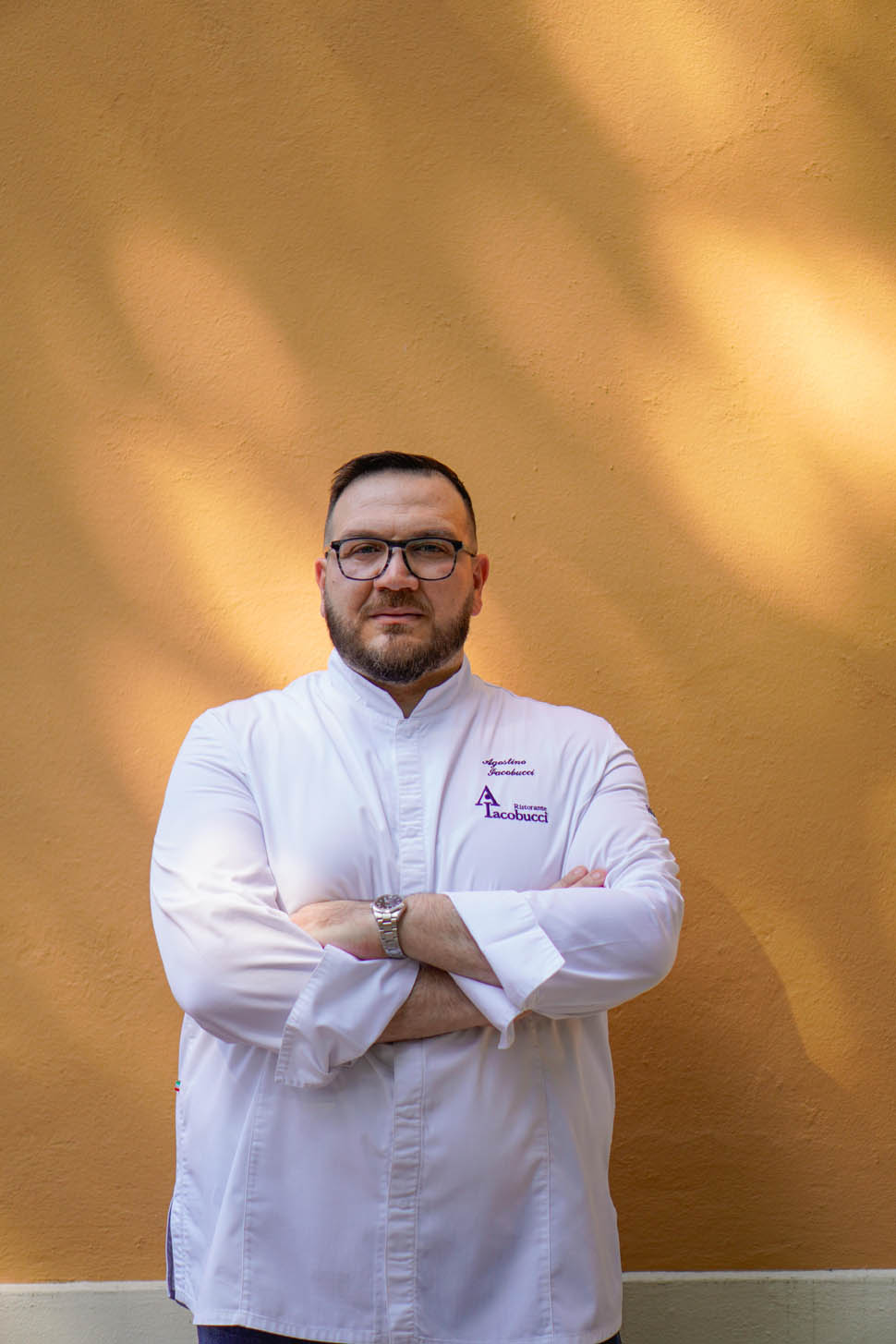
The story goes that the two (Michelin) stars were about to fall under the porches, except that the company that very day had decided to close its doors to the Event for another event. The critic ordered some meat and a salad, quit the balcony, and left. So did Agostino. Imagine a door under the porches, imagine how much he would have slammed. Agostino's father never complimented him. Yet, when he passed away, he was the one who missed him the most. The one who taught him to be ambitious and hungry, even when settling would have been the right thing to do. Agostino does not seek justice or even rightness; between two edges like discipline and tradition he makes his cooking flow. Between France and Campania - Agostino is from Castellammare - among scholastic legacies and lunges into other cultures.
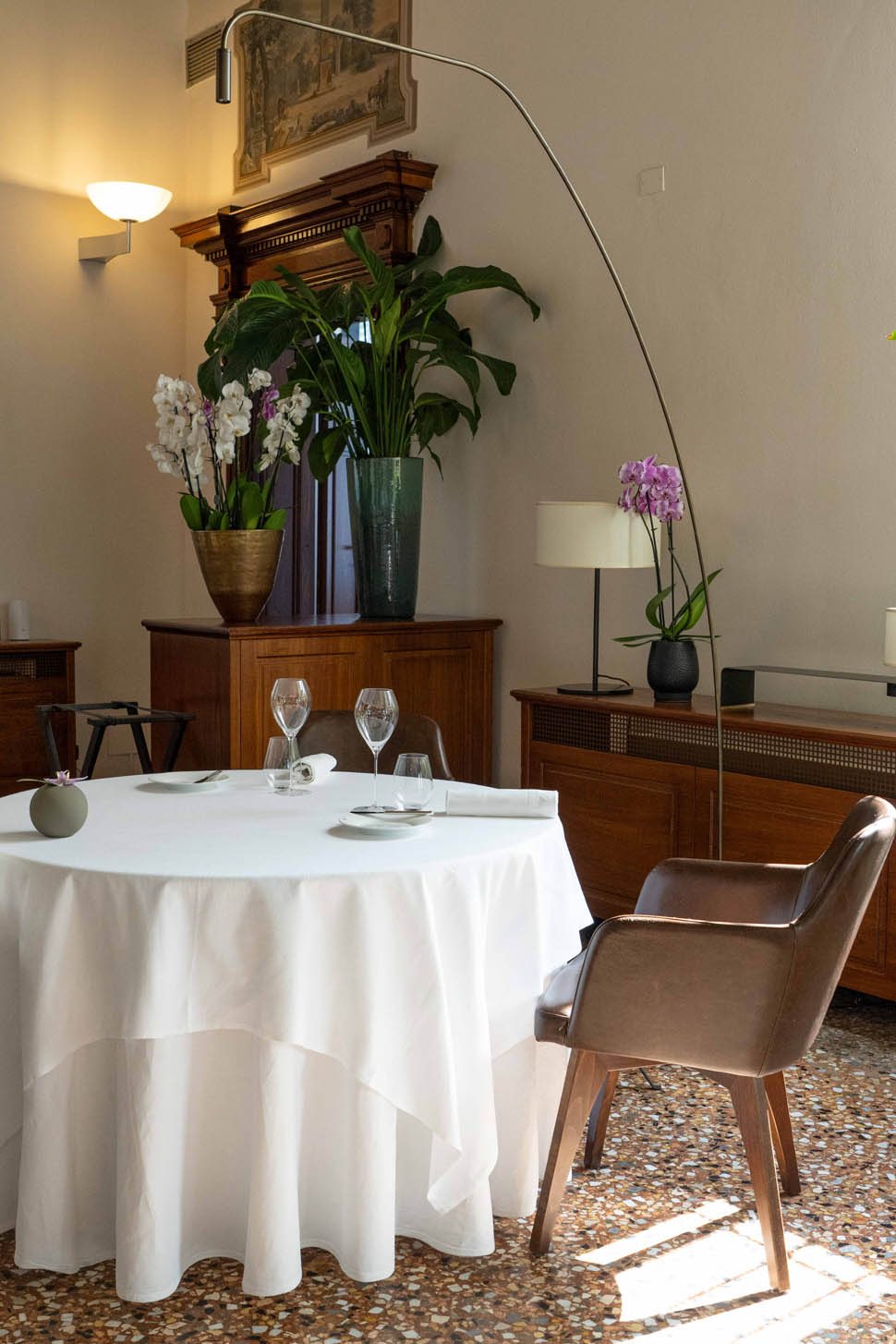
"I stick to the great tradition revisited, where taste and raw materials are enhanced. Tradition must be revived with the support of research and new techniques. The memory of the past has to be modernized. Kitchens in Italy are still very conditioned. So many colleagues are still jealous, they keep quiet, don't dialogue nor share with anyone. But what are they worried about? The world has changed. Today it is beautiful because you can see so many things at once, Italian biodiversity, the richness of Peru, the strength of China's traditions."
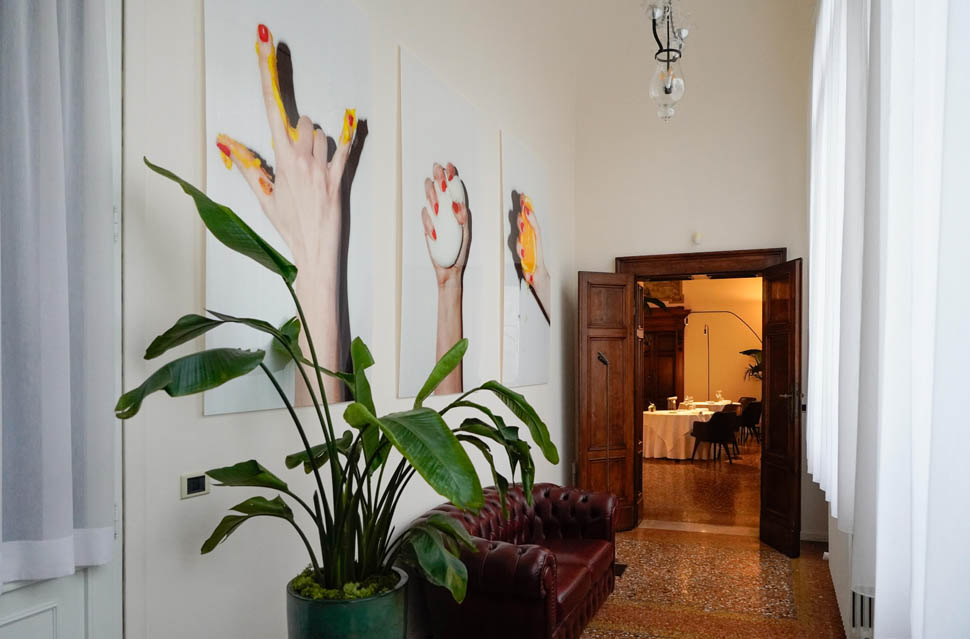
In the hallway leading to the dining room. Before you set your feet on Venetian floors and get crowned by Murano glass chandeliers. Before yielding to the rigor of starched and perceptually formal service, there is a triple pop moment that Agostino loves to emphasize: mozzarella, superstition, and citrus. Three pictures in which a woman's hand screams the chef's liberation, nothing but its origin. Photos with saturated colors that blatantly contradict the desaturation of the environment that awaits you. "The most important level is humbleness, the most beautiful thing between friends and colleagues is to tell each other if there is something wrong, if there is a mistake. Comparison helps to grow, not doing it instead, is a symptom of being unrealistic and like a broken record of playing only for oneself."
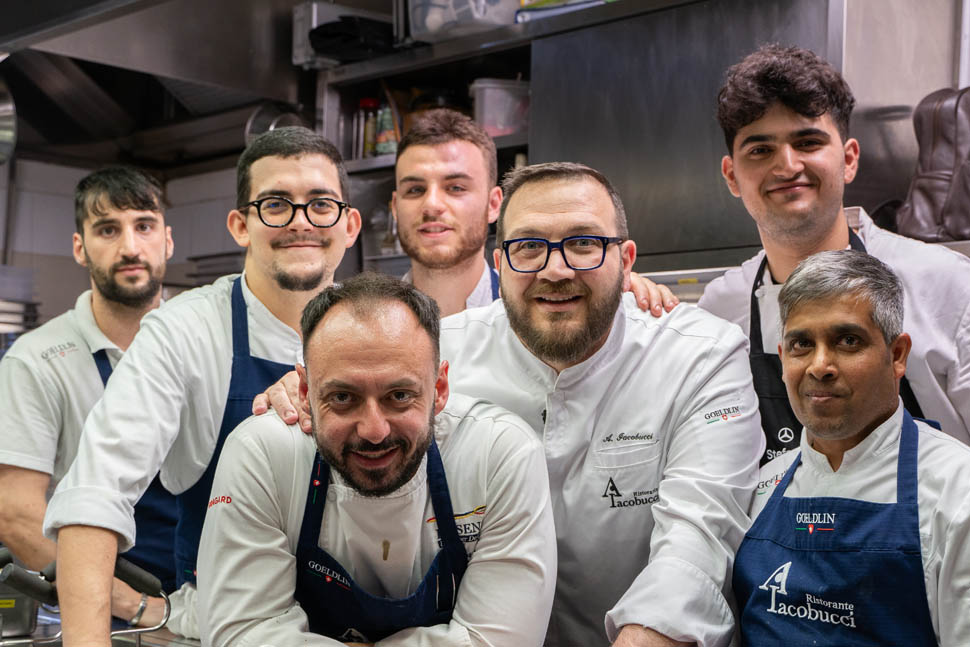
Agostino, out and about, sees little desire to prove anything to oneself. He, who at seventeen was already in France slaving away. First in the kitchens where they taught him to keep his nails clean and respect the schedule, then in the one at Mirazur, at Mauro Colagreco's, whom he considers a brother. That's where he realized that humility doesn't mean you're okay with everything, that you don't bother anyone. If someone teaches you something, it is because they believe in it. What will you be able to do except treating that person with respect? And right after that, think that not everything is owed to you.
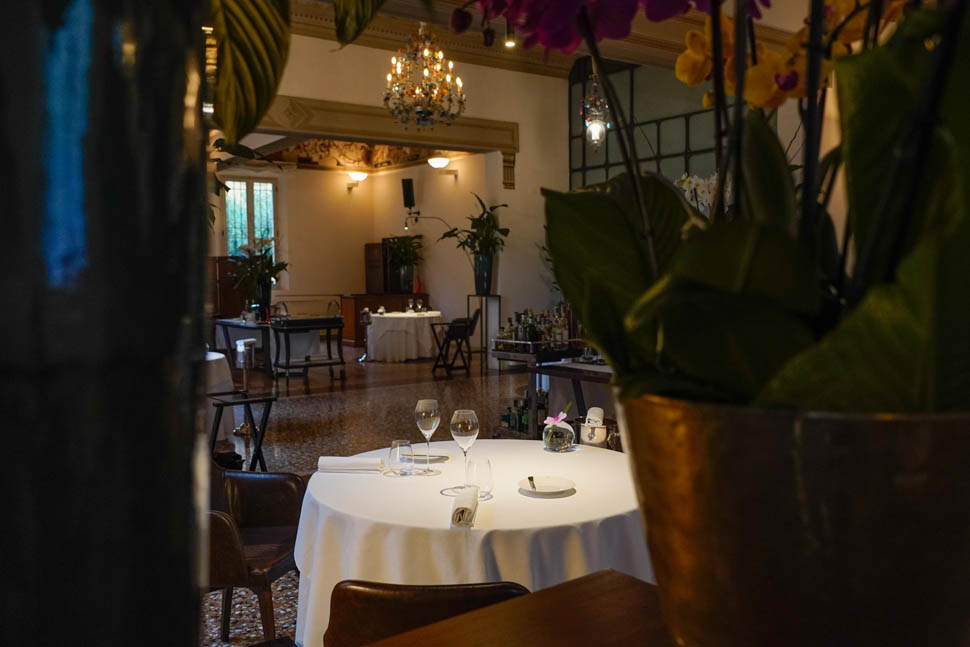
"I went in as an intern, and came out as one of the family. Mirazur is tough, yet it is foundational, it gets inside you. For me it was that passage in life to never take for granted. You know when you go on a diet, and then lightly splurge on a sandwich and chocolate. That's it, at Mirazur you can't go wrong; there are very solid rules. Once you're in it, it pulls you in and Mauro motivates you. It's sacrifice and emotion." Sacrifice and emotion. Today more and more the former repels the latter. Not for Agostino, according to whom, if they coexist, even more compliments come from others.

The cuisine
A series of twelve steps courses with an edible monument: the Baba. The emblem of a legend of the Campania region, which crosses time and space, never losing its relevance and strength. The leavening of a loaf that originally weighs only 20 grams, even less than the core, is triple. A cloud that has been traveling candidly above Agostino's head for the past 20 years, protecting him from the insulations of trends. The wetting is made with eleven rum essences, perfectly integrated into the alveolus. A flash of lavender, of herbs. Each bite is a small act of strength and lightness. It could also accompany alone, without the chantilly, red fruits and double milk. Ducasse came to spy on it, Colagreco didn't even bother, he just orders them.
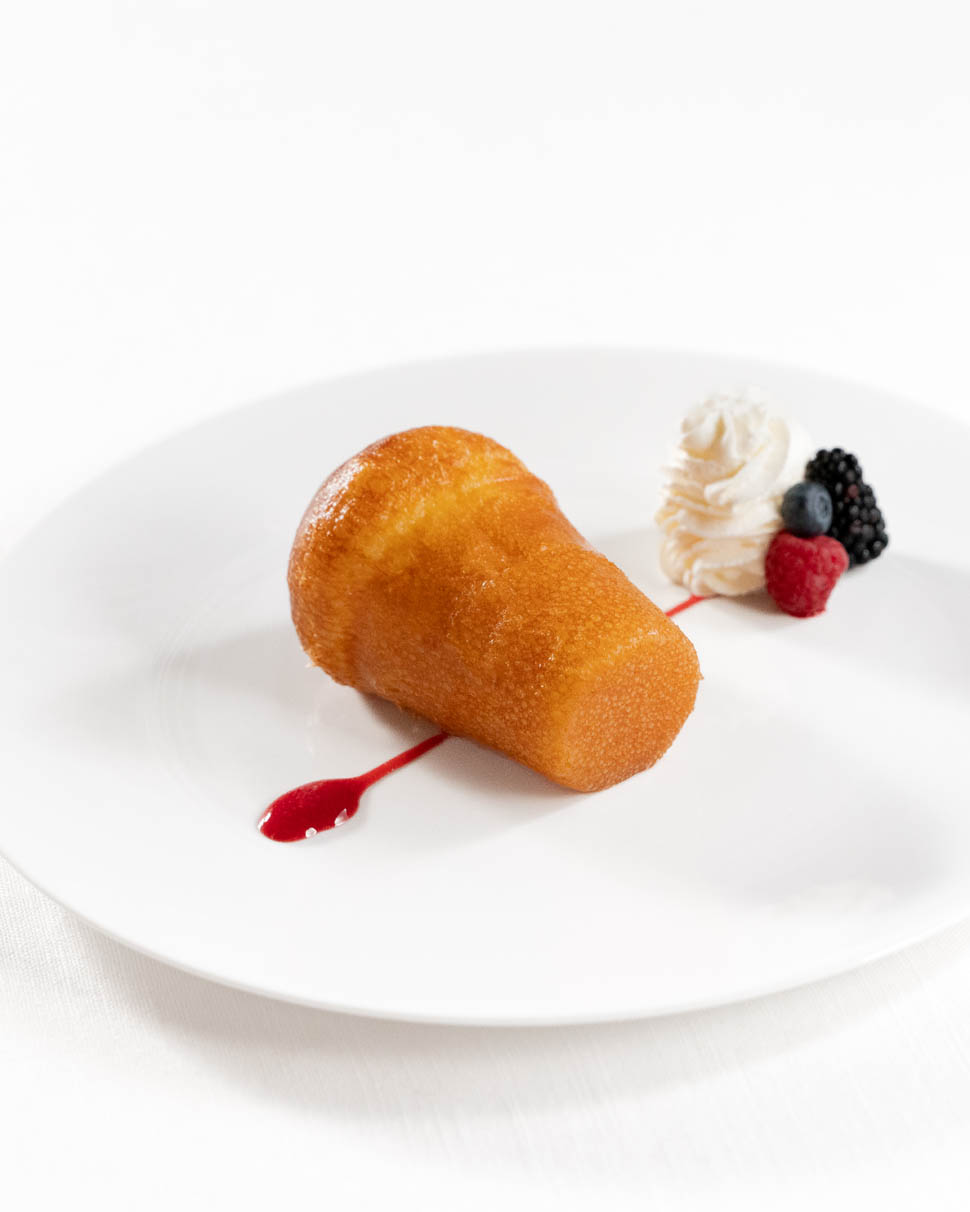
Continuing a rebours, the must stop is Cuttlefish, garlic mousse, n'duja oil and lime. Like in a museum, when there is the contemplative sofa in front of the works of great artists. Sit there, and eat this dish with your eyes as well. A canvas of garlic foam encloses a cuttlefish ragu beyond conceptual. Sprinkled with lime powder, squid ink and tongues of “Calabrian” oil. A dish for all hours of the day, from salty cappuccino, to midnight "aglio e olio". Let someone steal the recipe and make it into street (art) food. Even Inspector Zenigata, as well as those armed with pen and phone, will come running back.
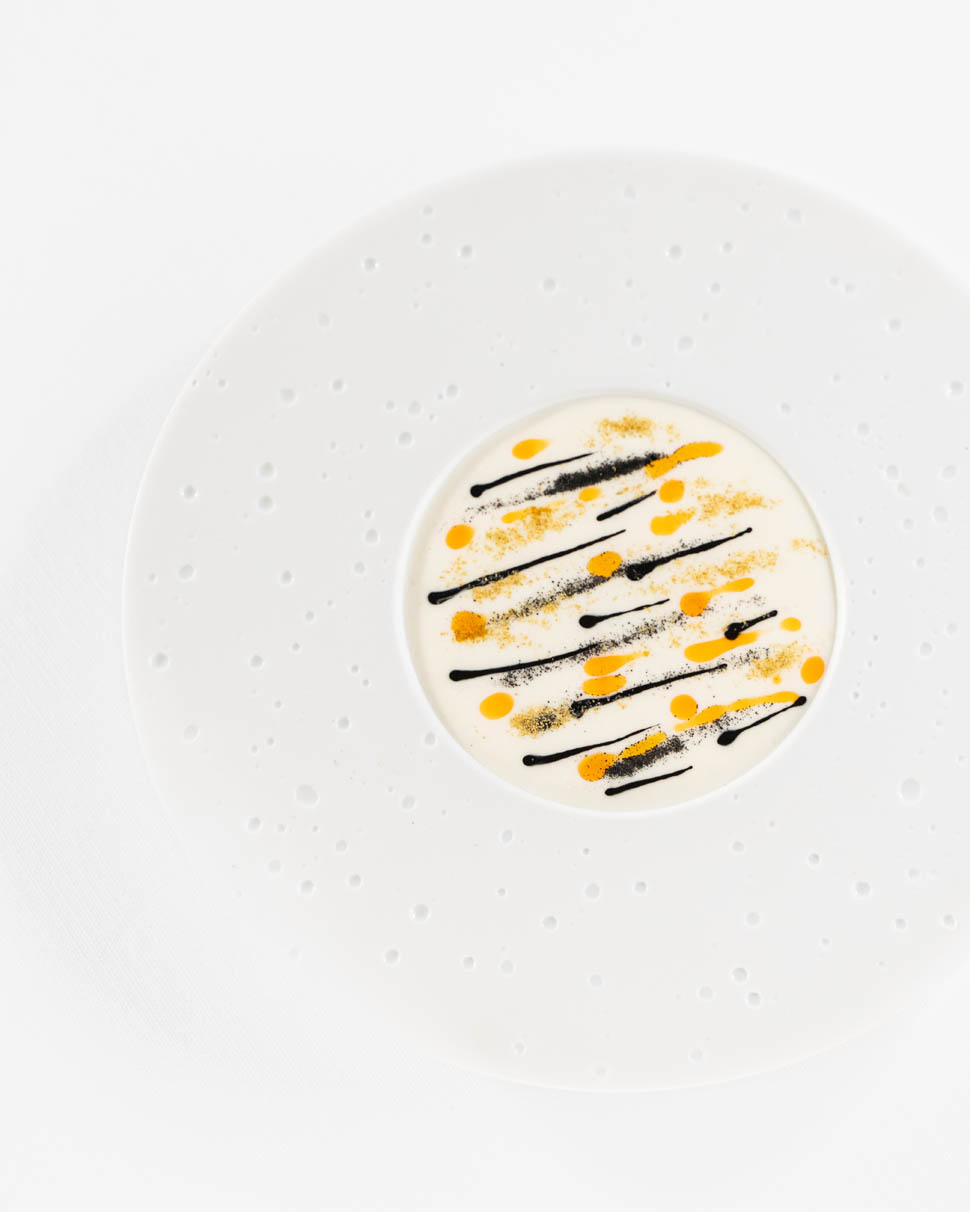
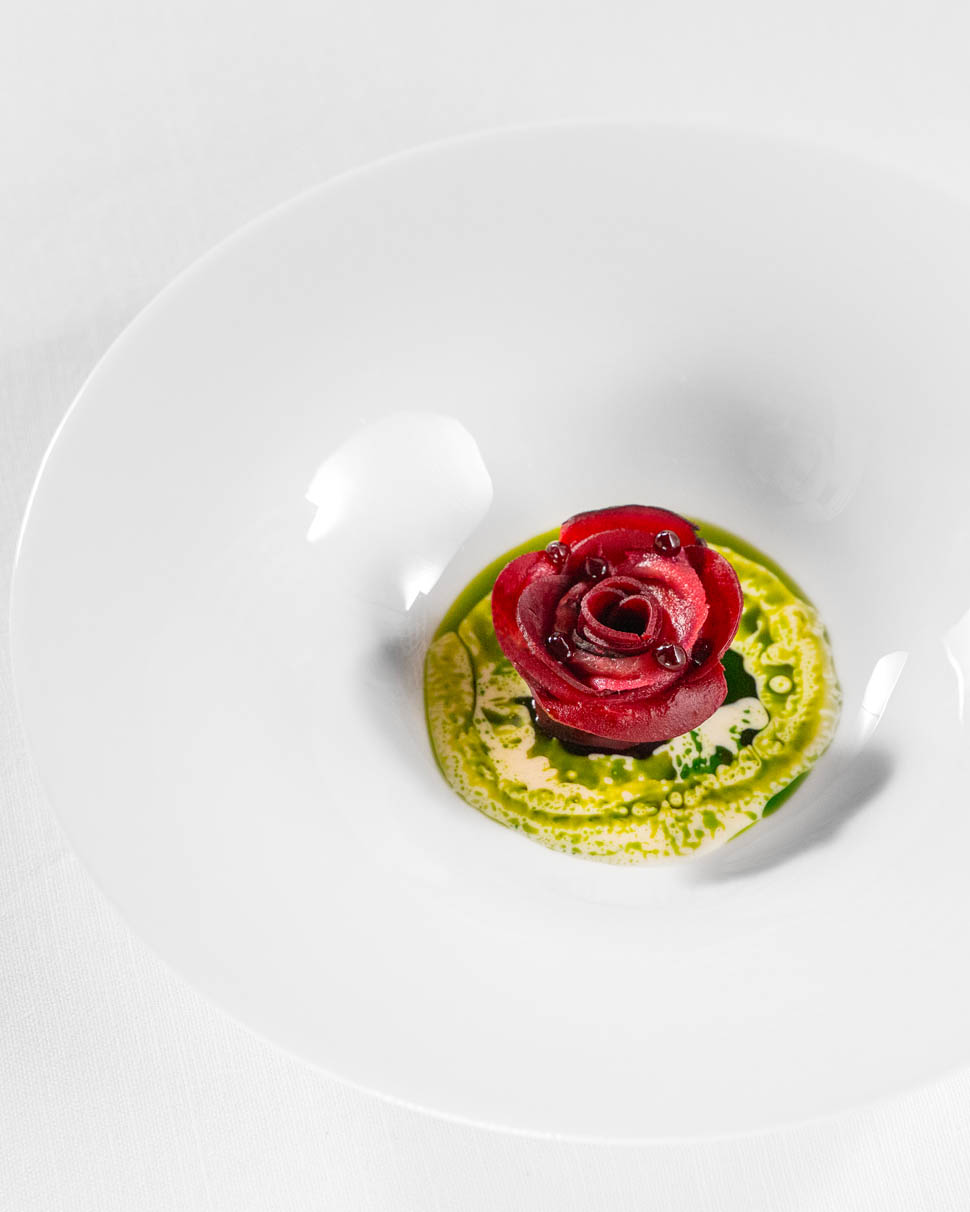
The second electrocution, masterpiece if you will, is Carrot in giardiniera, a total vegetable dish that for depth seems like a long-cooked pork dish. A memoir from the underground, in which the obvious orange root, back in vogue more for Sinner than for its qualities, is a multifaceted being: a veil created with its water is a crepe filled with a creamy of four different types of ginger-scented carrots, then a raw version with pollen and, on a separate saucer, the 3D carrot, the playful part, almost like a croissant. To counteract the sweetness, a mousse of giardiniera, which, if it were up to us, we would have also put as a filling the three-dimensional carrot.
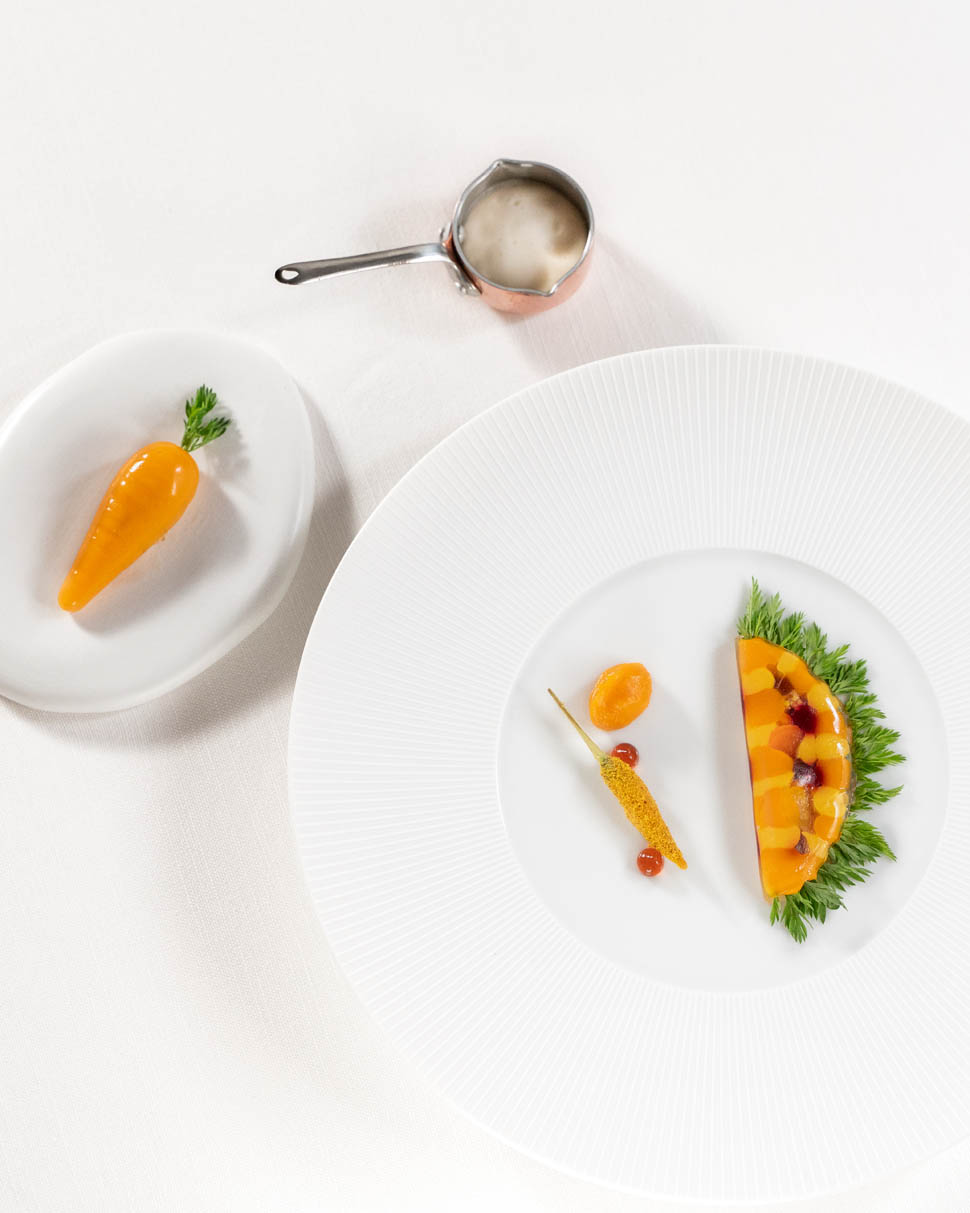
The carrots are all grown in the vegetable garden located in the backyard. A garden fed by horse manure - more complete says the chef - and resting four months of the year. Agostino covers little distance to harvest them; his dish will cover a lot and harvest even more. It could have been a vegetable choice to please a niche, it is nothing more than a brilliant brushstroke in which, between the layers of color, we read chef Colagreco's mentoring role. Can you imagine such a dish at Mirazur? Four yesses. Comacchio eel, pine nuts, citrus, gin misticanza and oriental flavors ends our collection of memorable dishes. Usually eel is served after the halfway of a menu. Here it is an appetizer. A fresh, light bite, saturated with the taste of the shelled fish yet without that fat-chewing sensation.
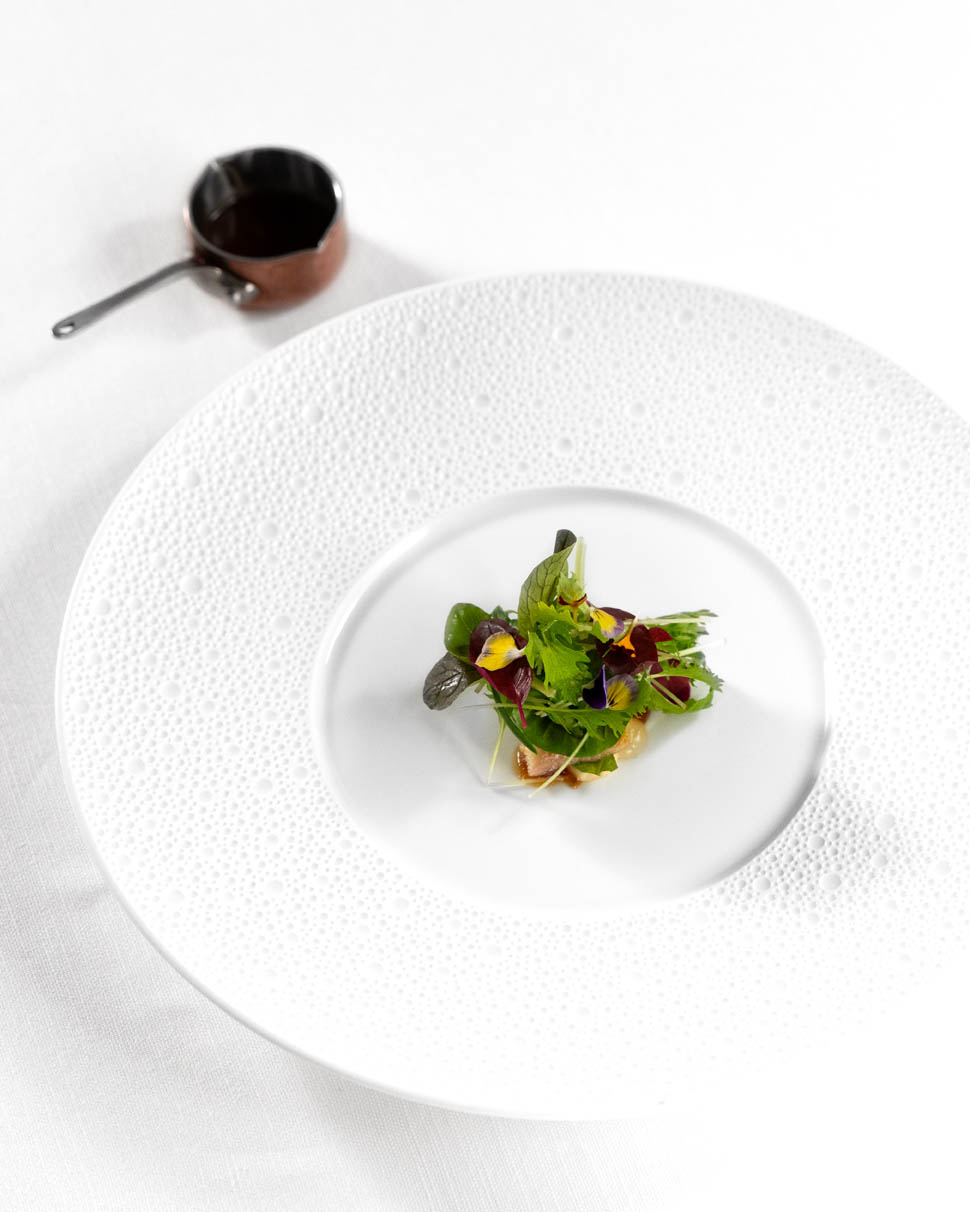
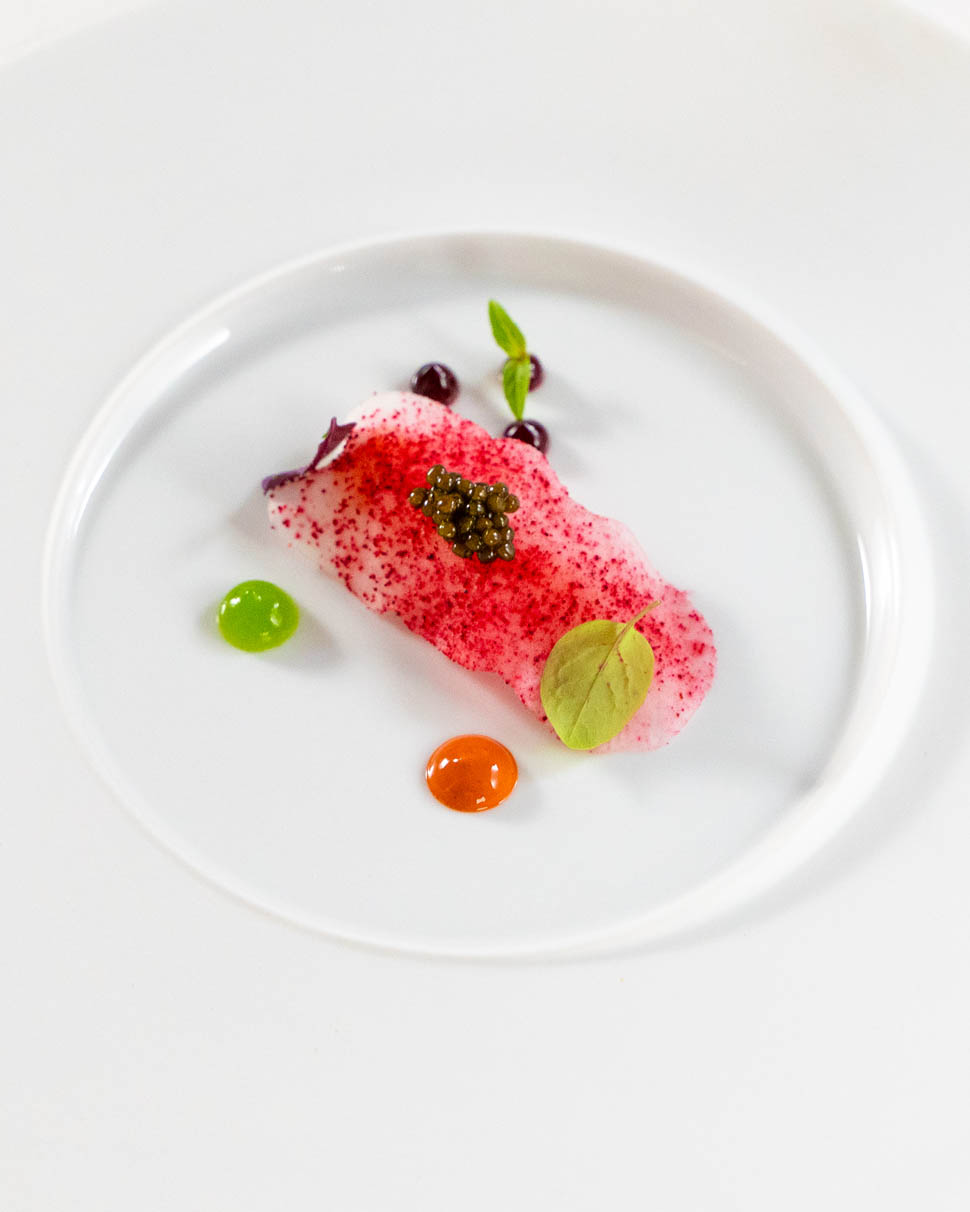
The eel is cooked upside down over coals so that all the fat drips off. It is napped gently, so for it to remain moist. The seasoning is a blend of Italy and the East. A mix of styles that posts the dish in the gallery of freshness. Agostino Iacobucci is a man who can still move you to tears, for his work and with his work.
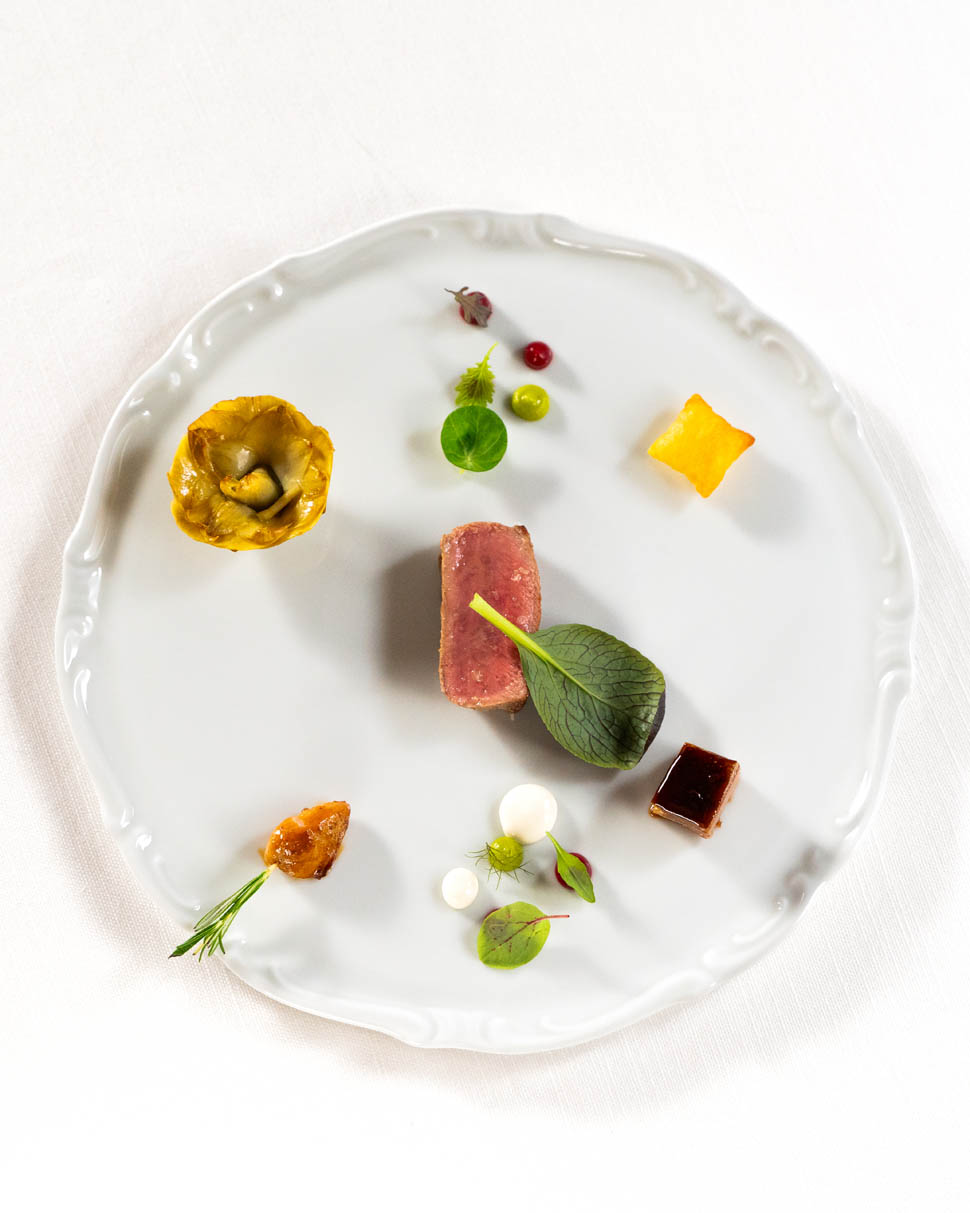

A precious man who retains the old style, who stays true to the French school, without dumbing down on other cultures. Rather, by studying them, he becomes an enhancer of them. Improving even the integrity of his tradition. If you could ever steal a tear from him, it would taste like citrus and mozzarella.
Contacts
Villa Zarri- Ristorante Iacobucci
Via Ronco, 1, 40013 Castel Maggiore BO
Phone: 051 700604

